In 1988, Anton Oed, at the Institut Laue-Langevin (ILL) in Grenoble, introduced a novel concept in detection: the micro-strip gas chamber (MSGC). Consisting of a set of tiny metal strips engraved on a thin insulating support, and alternatively connected as anodes and cathodes, the MSGC relies for its operation on the same processes of avalanche multiplication as the multi-wire devices. The photolithography technology used for manufacturing, however, permits to reduce the electrode spacing by at least an order of magnitude, correspondingly improving the multi-hit capability. Moreover, the fast collection of most positive ions by the nearby cathode strips reduces space charge build-up, and provides a largely increased rate capability. Introduced coincidentally with the first projects of high luminosity colliders, MSGCs filled a gap in the available detector technologies, between solid state strip detectors, having excellent performances but high costs, and the cheap but rate-limited traditional gas devices. Intensively developed by many research groups, MSGCs have been adopted as components in high rate tracking setups. For HERA-B at DESY, several hundred large MSGC plates, 30 cm on the side, have been built. Initially foreseen for the CMS detector, in construction for the LHC collider at CERN, they have been abandoned in favour of silicon microstrips due to doubts about reliability.
Schematics of a MSGC structure and operation:
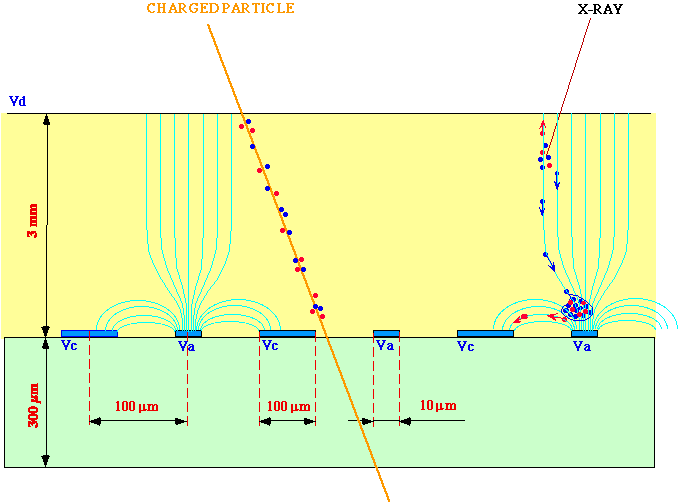 |
High rate operation requires the use of a reduced resistivity substrate, in the range from 10e9 to 10e12 Ohm cm. The figure provides a comparison of rate capability between classic Multi-Wire Chambers (MWPC) and MSGCs on semi-conducting substrates:
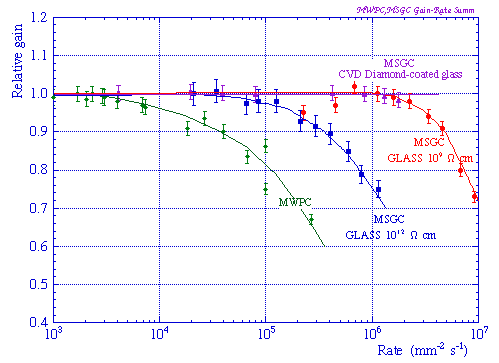
Similar rate capabilities can be obtained coating glass with a thin electron conducting layer fas for example diamond-like carbon (DLC), over or under the metal strips:

Typical assembly scheme of a medium-size MSGC, developed by GDD:

Schematics of the micro-strip plate (chromium or gold strips on diamond-coated thin glass):
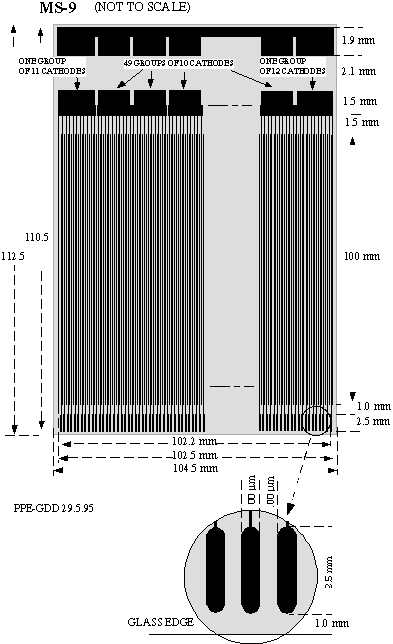
Most MSGCs for GDD have been produced by IMT Masken und Teilungen AG, GREIFENSEE (CH)
Schematics of the 12-MSGC setup built and operated in test beams by GDD:
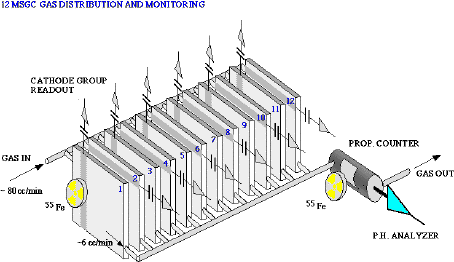
Typical cluster charge (sum of recorded charges on adjacent strips) for minimum ionizing particles, and electronics noise:
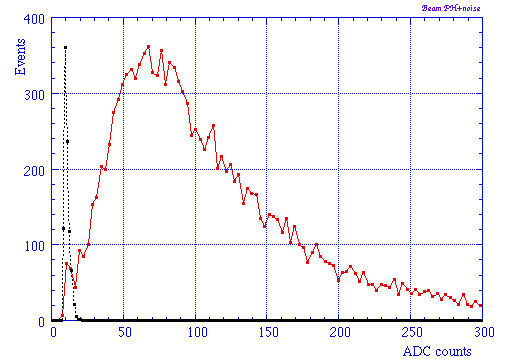
Cluster size distribution for several MSGCs and minimum ionizing tracks perpendicular to the plates:
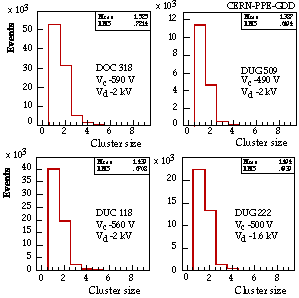
Typical event with multiple tracks recorded in a set of six aligned MSGCs:
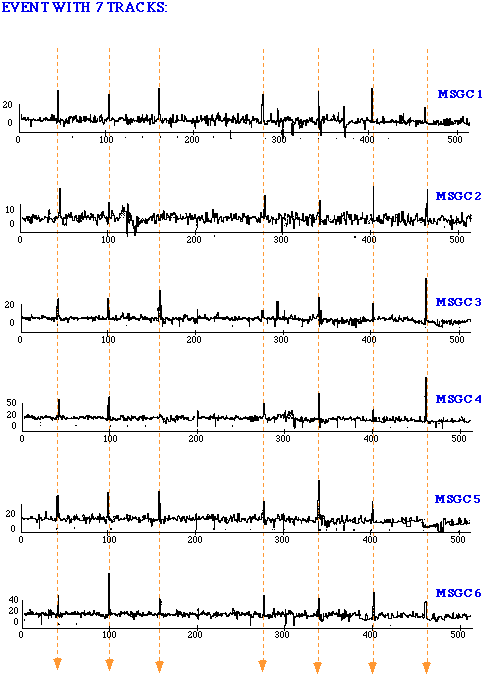
DISCHARGES AND AGING OF MSGCs
Two major problems have been met with MSGCs: rare but damaging discharges, and slow but continuous deterioration (aging) during sustained irradiation. The appearance of discharges during operation is a permanent problem with all gas micro-pattern detectors, and has been extensively analyzed in studies exceeding the MSGCs framework. The general conclusion is, that when the total charge in the avalanche exceeds a value between 10e7 and 10e8 electron-ion pairs (Raether's limit), an enhancement of the electric field in front and behind the primary avalanche induces the fast growth of a long, filament-like streamer. In the high fields and narrow gaps typical of micro-pattern devices, this leads to discharge, with damaging effects on the strips as seen in the figure:
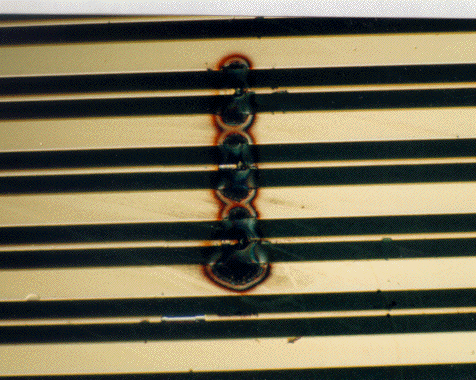
(SEE ALSO DISCHARGES IN MICROPATTERN DETECTORS)
Aging, the slow degradation of performance during sustained irradiation, is a problem encountered with most gaseous counters, and has been extensively studied experimentally. The observed permanent damage of the plates has been imputed to the production of polymeric compounds in the avalanches, sticking to the electrodes or to the insulator, perturbing the counting action and inducing discharges. MSGCs have been found to be particularly prone to aging, possibly because of the small effective area used for charge multiplication.
Close view of a MSGC after long-term local irradiation. An insulating, transparent film coats the irradiated areas, producing a pattern of interference colors. The cathode edges are damaged by micro-discharges:

Organic gases like hydrocarbons induce very fast aging, while others, such as dimethyl-ether and carbon tetrafluoride, allow more extended lifetimes. A careful selection of the operating gas and of the materials used in manufacturing is mandatory to guarantee survival of the devices in a high radiation environment .
SELECTED REFERENCES (SEE ALSO PUBLICATIONS ):
A. Barr, S. Bachmann, B. Boimska, R. Bouclier, A. Braem, C. Camps, M. Capeáns, V. Commichau, W. Dominik, G. Flügge, F. Gómez, R. Hammarstrom, K. Hangarter, M. Hoch, J.C. Labbé, D. Macke, G. Manzin, F. Meijers, G. Million, K. Muhlemann, et al., Construction, test and operation in a high intensity beam of a small system of micro-strip gas chambers. Nucl. Instrum. and Meth. A403 (1998) 31.
F. Sauli and A. Sharma, Micro-pattern gaseous detectors, Ann. Rev. Nucl. Part. Sci. 49(1999)341
For downloadable PAPERS on detectors see PUBLICATIONS.
